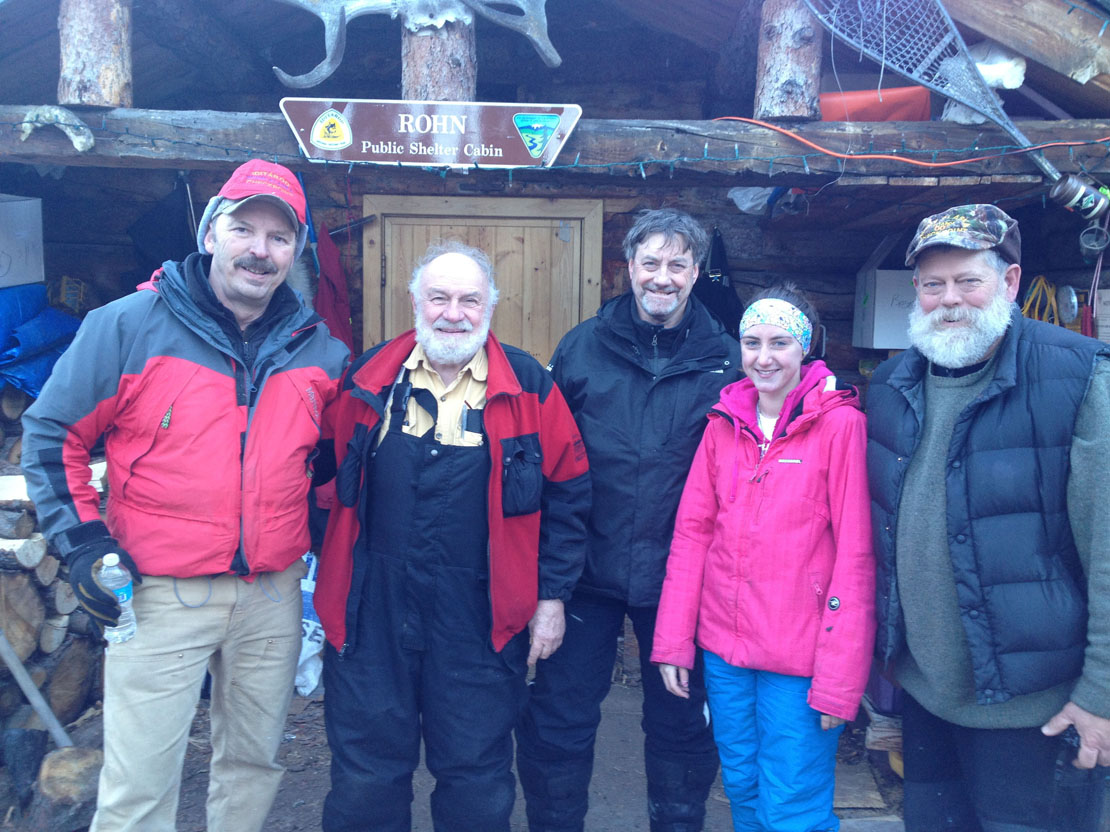In a year when some of the most seasoned Iditarod racers pulled themselves and their dog teams out of what’s known as the “Last Great Race” — Jeff King and DeeDee Jonrowe, for example — Homer snowmachiners Dr. Paul Sayer, Dr. Paul Raymond and Raymond’s daughter Kendra, a student at Homer Middle School, battled the horrific trail and weather conditions and are safely back in Homer.
“That was by far the toughest trail and some of the toughest weather conditions that we’ve ever had,” said Sayer who has made the journey 22 times.
Sayer and the Raymonds headed north March 2, the same day 69 mushers and their teams started their race to Nome. Ahead of them were challenges the likes of which Sayer had never encountered.
“There’s two burns, one that’s 35 years old and is the burn everyone associates with being such a horrendous trail,” said Sayer. “But there’s a new burn area that was just unbelievable because, one, there was no snow and, two, the permafrost is thawing out, so, as it thaws out in the summer, the moss goes away, the dirt comes up and it erodes into gullies that can kind of swallow a sled or make a snowmobile try to turn over.”
To make matters worse, as that area erodes, tree roots become exposed.
“They go every which direction and they can tear the heck out of anything and flip you over even if you’re going a mile an hour,” said Sayer.
An area the seasoned snowmachiner anticipated would take three to four hours to traverse stretched into a 12-hour battle.
“We had many, many times that we flipped over, occasions when we had to use a come-along to winch up every machine out of terribly steep gullies, something that literally takes an hour at a time,” said Sayer.
The trial wasn’t enough to damage the machines or the riders, but Sayer said they did witness “many upset mushers who were just at their wits’ end because the trail was so bad.”
The Dalzell Gorge is another area noted for being challenging even under the best circumstances, but this year “was extremely tough. Very, very tough,” said Sayer.
The three snowmachiners stopped in Takotna for a few days, picking up several other snowmachiners before continuing north. One of those joining the group was Dick Newton, who has made the trip with Sayer many times. They spent a few more days in Unalakleet and then set out to finish the remaining 261 miles to Nome.
It was the 55-mile stretch between White Mountain and Safety, the Iditarod’s final checkpoint before the trail continues the last 22 miles into Nome, when extreme weather conditions set in. Winds hit 70 miles an hour, creating blizzard conditions that decreased visibility to as little as one or two feet at times.
“It (the wind) pushed Dr. Raymond’s girl. I saw it happen. Flipped her over,” said Sayer. “And we were going one to five miles an hour.”
Kendra said it was the combination of strong wind and ice that was most frightening.
“A gust of wind pretty much picked up my machine and it flipped over. It was really scary. I really don’t like the ice. That was my least favorite time,” she said.
As the snowmachiners slowly fought their way toward Safety, they came upon Iditarod musher Jeff King.
“He got to feeling so cold that he had huddled up with his dogs. … He finally decided he was going to get so hypothermic that his life was in danger, and he was right. So he took off, walking,” said Sayer.
The snowmachiners gave King a ride into Safety, where they and arriving mushers struggled to warm up. Another group of snowmachiners braved the storm to bring King’s dogs to the checkpoint.
“While we were there in Safety, every one of us gradually thawed out,” said Sayer. “And then we started shivering. One guy was so cold that he thought he was hot. Those are the mid-end points of hypothermia.”
While the overnight in Safety gave the snowmachiners time to warm up, it wasn’t quite enough time for their gear.
“My helmet didn’t thaw out,” said Kendra. “It was just ice in the morning and I got a little frostbite on my face.”
Paul Raymond called this year’s snowmachine trip “a good experience. We had about 70 miles of nothing but gravel and no snow, and then we ended up in a snow storm in the end.”
Having made the trip by snowmachine twice, Kendra said she once considered taking up mushing. From what she’s seen the mushers endure on the trail, however, she has “decided that might not be so much fun.”
Sayer had nothing but praise for Kendra.
“Out of all of us, she never complained once. And let me be frank, I complained a few times. But that little girl never complained,” he said. “She didn’t make one mistake. I’ve got to give it to her.”
For the most part, he considers the Iditarod “a pretty civilized race, but Mother Nature pulled ‘civilized’ right out of it this year.”
Of this year’s snowmachine trip, Sayer said, “There were two times I wish I had not gone. It was a very intense ordeal. … It’s the most challenging of any year, that’s for sure.”


